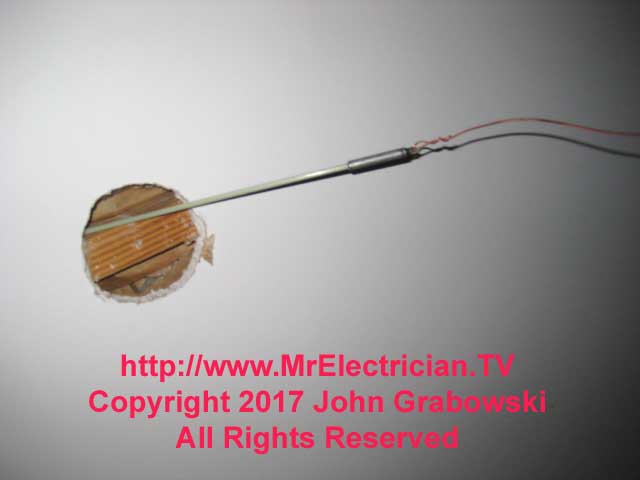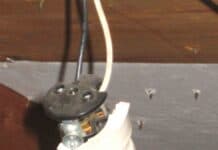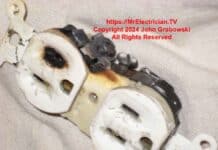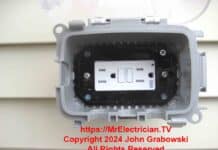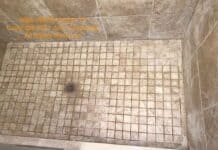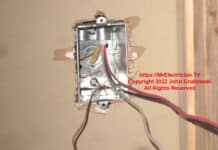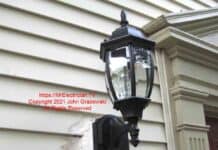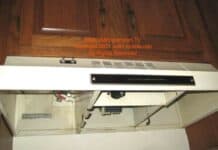Dear Mr. Electrician: How do I pull wires in walls and ceilings? Can I use a metal coat hanger for wire pulling?
Answer: Several methods and tools are available for wire pulling in walls and ceilings. How to pull wire depends on the wall or ceiling construction and the tools that are available at the moment.
Table of Contents:
NOTE: Some text links below go to applicable products on Amazon. As an Amazon Associate, I earn from qualifying purchases. Using my links helps to keep this website FREE.
WIRE PULLING THROUGH WALLS AND CEILINGS
My experiences using metal wire coat hangers to fish wires through walls and ceilings have not been perfect. The steel wire used to manufacture coat hangers is a soft, mild metal that bends easily. When a coat hanger wire is pushed into a wall, it becomes distorted and is not very controllable as to direction.
However, I keep some metal wire hangers on my truck. I use them for hooking things and probing inside a wall or ceiling. More about coat hangers is down at the bottom of this post. A picture of my homemade tool from a coat hanger is below.
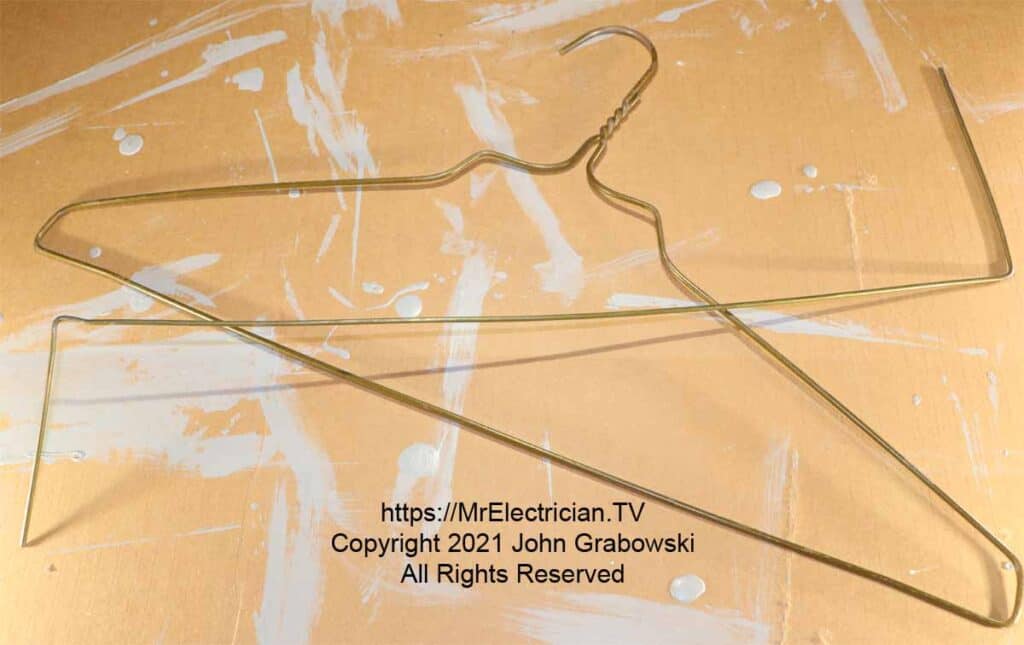
For working at home, where you probably will not install long electrical conduit runs, a twenty-five-foot fish tape would be adequate for your wire fishing jobs. I recommend at least a 1/8″ x .060″ size fish tape.
In my inventory of tools, I have several short pieces of fish tape of varying lengths from one foot to around eight feet. After getting bent or twisted incorrectly, they were all broken off of much longer fish tapes.
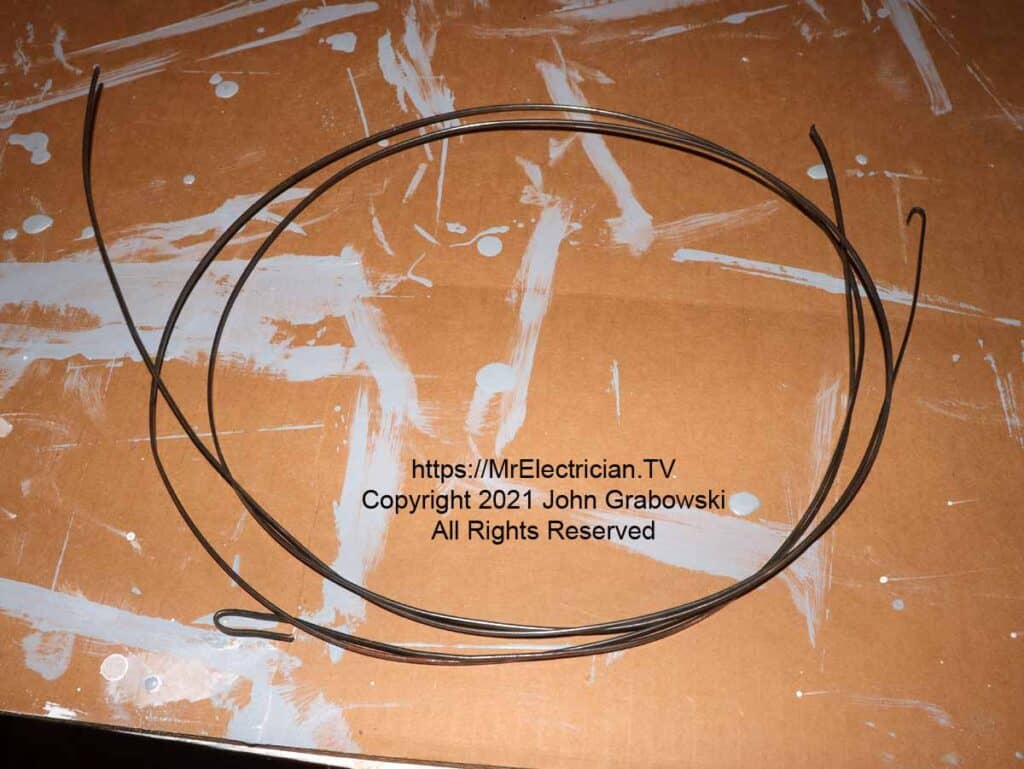
A metal Fish Tape is made of hardened steel with some built-in flexibility. It is mainly rigid but can be bent slightly to get around obstacles. It is excellent for fishing wires in walls and pulling wires through conduits. If the hook breaks, you can heat the metal and bend a new one.

The sloped ceiling in the photo above made it easy for me to push my fish tape up into the attic. There was a space between the top plate of the wall and the ceiling joists big enough to put my hand through.
After I attached the Romex cable to the fish tape, I pulled it through a drilled hole in the top plate and fished it down the wall to a new switch box.
When I began working on electrical jobs in the early 1960s, the metal fish tapes available were either loose or on a rigid metal reel. The loose fish tapes were usually coiled into a short, flexible metal conduit.

I would cringe whenever I had to rewind the fish tape onto one of those old metal reels. My hands would hurt from pulling it into the tight metal grooves. Eventually, an attachment winder was made to make the process easier. I was in wire-pulling heaven after my father bought a new plastic reel to wind the fish tape on. So much easier.
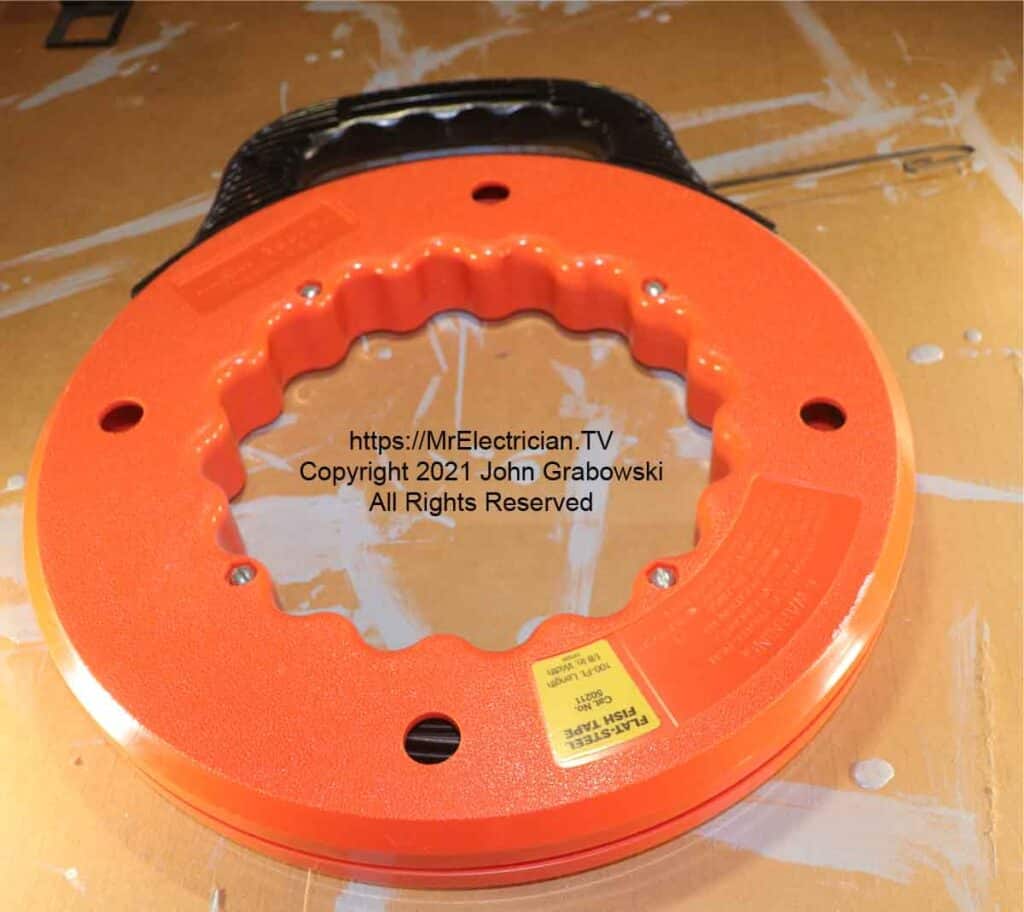
WIRE-PULLING FISH RODS
Fiberglass rods are also made for pulling wires through walls and ceilings. These are available in different lengths and thicknesses and are excellent for pushing through insulated walls. They don’t flex as much as a fish tape, which is good if you push it across an attic.
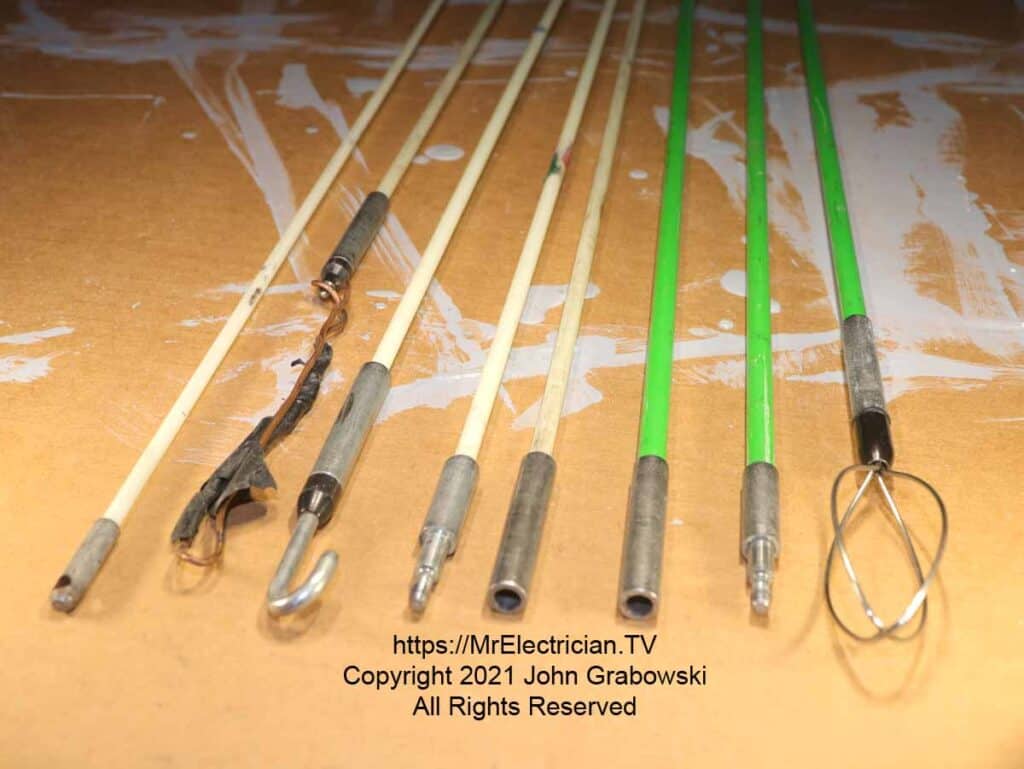
Wire-pulling rods come in at least three diameters, depending on the manufacturer. 5/32″, 3/16″, 1/4′. The smallest diameter is extremely flexible, and the largest is slightly rigid. I tend to use the 3/16″ the most as it has a combination of flexibility and rigidity that is good for fishing up and down walls with insulation.

Fiberglass rods come with some accessory screw-in tips for different applications. At least one company makes additional accessories for attaching to rods. I have found them to be helpful in various situations. One accessory is a hook that is great for grabbing wire across a suspended ceiling or an attic.
In the photo below, you can see that I added a piece of number 12 copper solid wire looped on the end of one pull rod. I used that when I had multiple wires to pull.
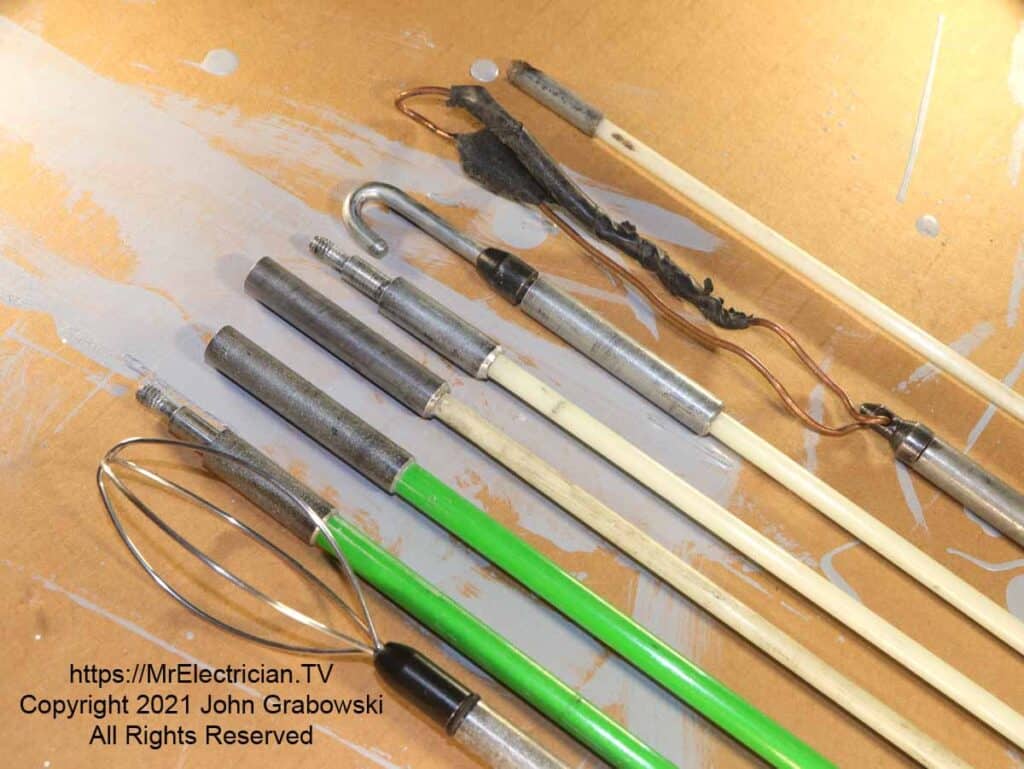
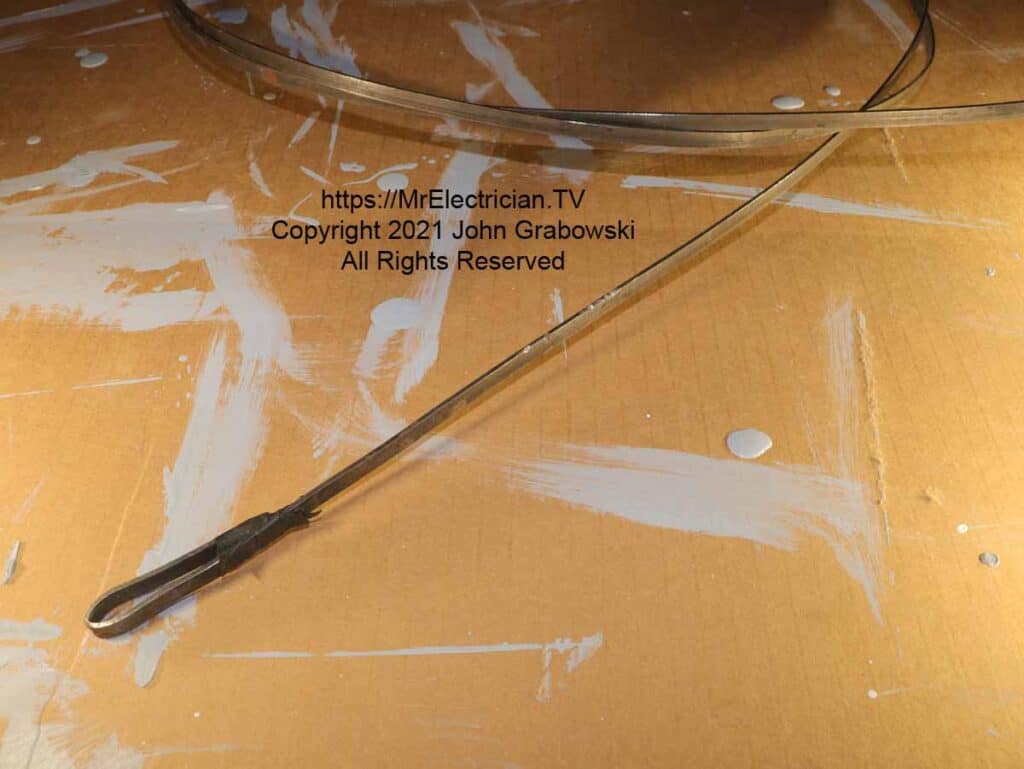
Above is a short piece of 1/4″ wide metal fish tape. It used to be much longer. I used the 1/4″ fish tape when snaking across long distances or up inside insulated walls.
Since I started using the fiberglass rods, I haven’t used the 1/4″ fish tape as much. The rods have more control over long distances, especially the 1/4″ fiberglass wire-pulling rods.
HOW I USE A WIRE COAT HANGER WHEN PULLING WIRE
I keep a piece or two of coat hanger wire in my truck. One piece is about a foot long and bent into an L shape at each end. One bent end extends approximately 3.5″, and the other extends approximately 2.5″.
Before I cut a hole in a wall or ceiling, I will make a small hole (Approximately 1/4″), with an Awl or long thin screwdriver, into the center of the hole to be cut. First, I insert a long, thin screwdriver or a short fish tape into the hole to probe for obstacles.
If I detect no obstructions, I will insert the screwdriver or fish tape at a sharp angle in four different directions to feel for pipes, ducts, wood, wires, or anything else that might inhibit installing something into the wall or ceiling.

CLICK HERE to see Wire Pulling Gear on Amazon
My final step before cutting the hole is to insert the L-shaped coat hanger into the wall or ceiling. I push the coat hanger in and out while rotating to sense for obstructions.
I find that the coat hanger is handy for detecting anything that is up against the backside of the wallboard. It is the best way that I have seen to determine if a Resilient Channel has been installed to reduce sound transmission.
Because the Resilient Channel is against the backside of the wallboard, it isn’t easy to detect when inserting a straight probe such as a screwdriver. If there is insulation in the wall or ceiling, you may find that it will inhibit the coat hanger and also cause it to bend as you push it in.
I have also found it helpful to use a metal wire coat hanger to grab things inside of a wall or ceiling. Sometimes, I push my fish tape down a wall, and it is just beyond my reach.
A metal coat hanger with a hook on the end is pretty good at reaching inside a wall to grab a wire, hook fish tape, or even a fiberglass rod.
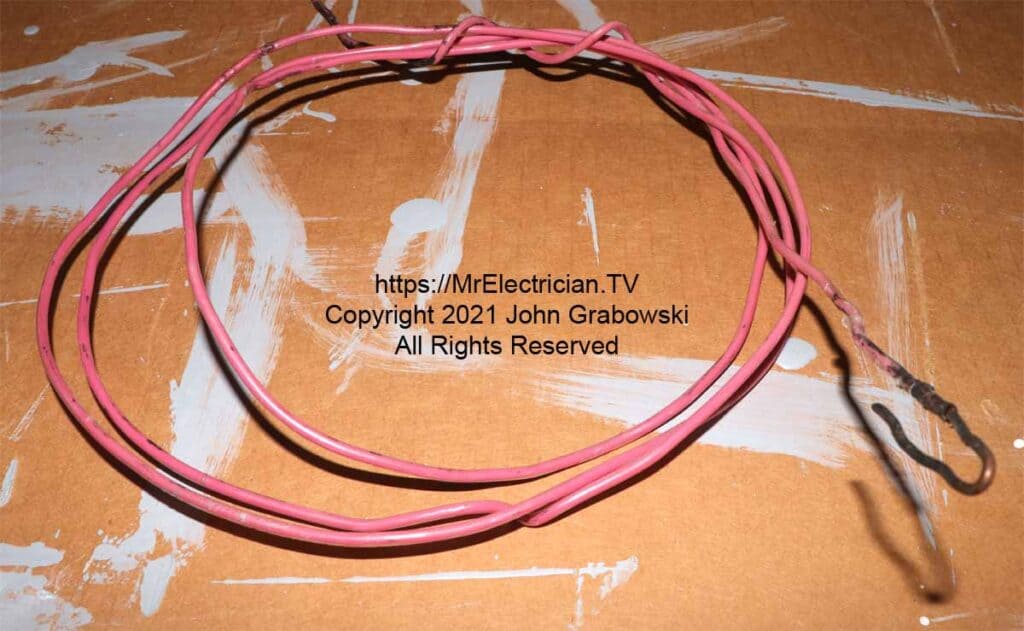
I also keep a short piece of number 12 solid copper wire handy for fishing through short, difficult openings and hooking wires and fish tapes in the wall.
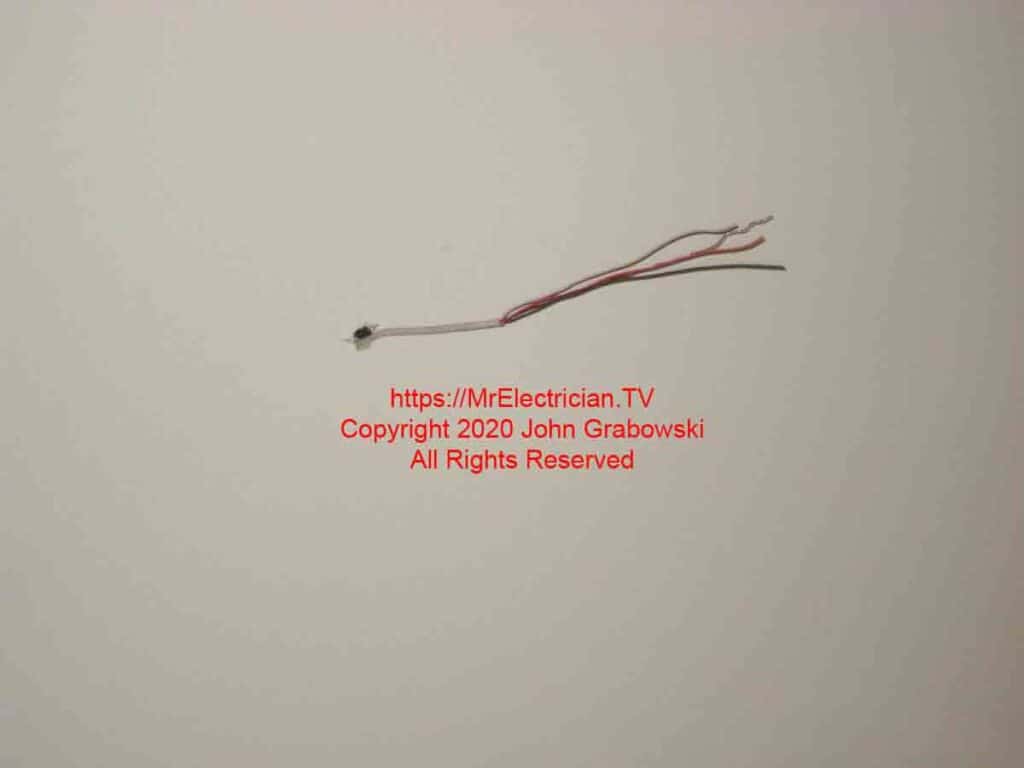
A metal wire coat hanger is an excellent tool to keep in your toolbox, among other tools for pulling wires.
Click the link to see how I had to fish some wires when I added a dimmer and light fixture.
To help keep this website free, please use this Amazon link for your purchases. As an Amazon Associate, I earn from qualifying purchases.
Click here for a FREE copy of my book “Almost Everything You Need To Know To Repair a Bathroom Exhaust Fan In Your Home.”
Get your required “Emergency Disconnect, Service Disconnect” labels and stickers to satisfy the 2023 National Electrical Code requirements in article 230.85(E)(1) and (2) by going to my Redbubble Shop here.
Visit my Link Tree for my social media connections and links to merchandise in my Redbubble Shop.
